Solaster dawsoni Verrill, 1880Common name(s): Dawson's sun star, Morning sun star |
|
| Synonyms: | 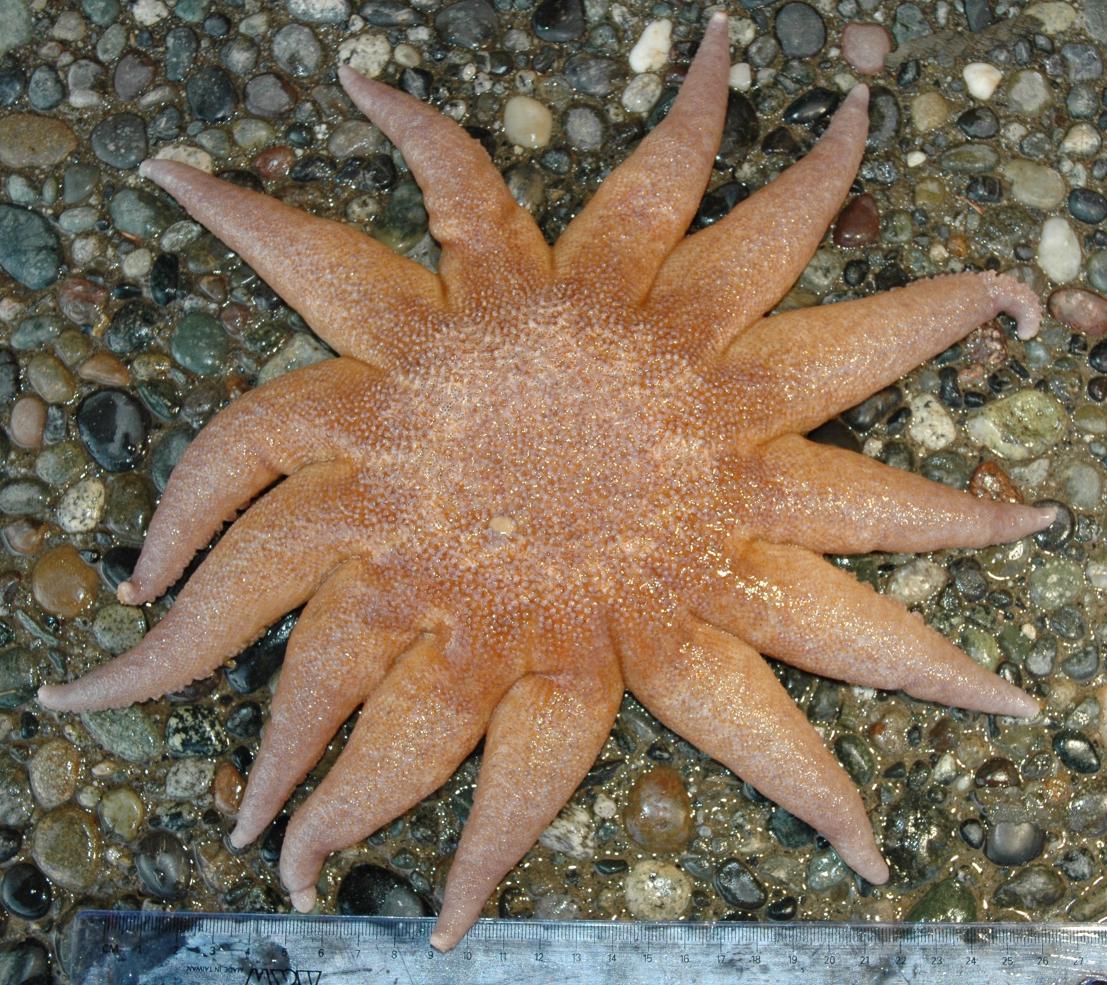 |
| Phylum Echinodermata
Class Asteroidea Order Spinulosida Suborder Eugnathina Family Solasteridae |
|
| Solaster dawsoni collected from near Northwest Island, WA. Scale is in centimeters | |
| (Photo by: Dave Cowles, August 2005) | |
How to Distinguish from Similar Species: Pycnopodia helianthoides grows larger, has more rays, has pedicellariae, and has obvious ossicles projecting from the aboral surface. Solaster stimpsoni has an orange or pink aboral surface with a grayish-blue streak radiating from the central disk out along each ray.
Geographical Range: Point Franklin, Alaska to Monterey Bay, CA (uncommon in central California)
Depth Range: Intertidal to 414 m (mostly subtidal)
Habitat: Usually on rocky bottoms, but sometimes on gravel or sand
Biology/Natural
History:
Solaster
dawsoni is a predator on other seastars, including Solaster
stimpsoni, other Solaster dawsoni,
Leptasterias
hexactis, Evasterias troschelii,
Dermasterias
imbricata, Henricia
leviuscula,
Crossaster
papposus,Pycnopodia
helianthoides,
and Mediaster
aequalis.
It also has been seen to feed on the sea cucumbers
Eupentacta
quinquesemita, Psolus
chitonoides, Cucumaria
miniata, and young Parastichopus
californicus, and on the nudibranch Tritonia
festiva, which
swims away rapidly when touched. Many other seastars also
move away
quickly when touched by S. dawsoni. S.
dawsoni moves
along with its leading rays
raised, and lunges forward (at least fast for a seastar) when it
touches
another star. S.
stimpsoni,
one of its favorite prey species, curls all its arms
upward above the disk
when encountered and sometimes wards off the attack. In Auke
Bay,
Alaska, S. dawsoni seems to eat mainly green
urchins
Strongylocentrotus
droebachiensis. The commensal polychaete
scaleworms Arctonoe
vittata and Arctonoe
fragilis are common on the star. Spawning
occurs in mid April
in southern British Columbia. Eggs are about 1 mm in
diameter.
Juveniles often take refuge among the tubedwelling polychaete Phyllochaetopterus
prolifica.
| Return to: | |||
| Main Page | Alphabetic Index | Systematic Index | Glossary |
References:
Dichotomous Keys:Flora and Fairbanks, 1966
Kozloff 1987, 1996
Smith and Carlton, 1975
General References:
Carefoot,
1977
Harbo,
1999
Johnson
and Snook, 1955
Kozloff,
1993
McConnaughey
and McConnaughey, 1985
Morris
et al., 1980
Niesen,
1997
O'Clair
and O'Clair, 1998
Ricketts
et al., 1985
Sept,
1999
Scientific Articles:
Hotchkiss, Frederick C., 2000. On the number of rays in starfish. American Zoologist 40:3 pp. 340-354
McEdward,
Larry R. and Benjamin G. Miner, 2006. Estimation
and interpretation
of egg provisioning in marine invertebrates. Integrative and
Comparative
Biology 46:3 pp 224-232
Web sites:
General Notes and Observations: Locations, abundances, unusual behaviors:
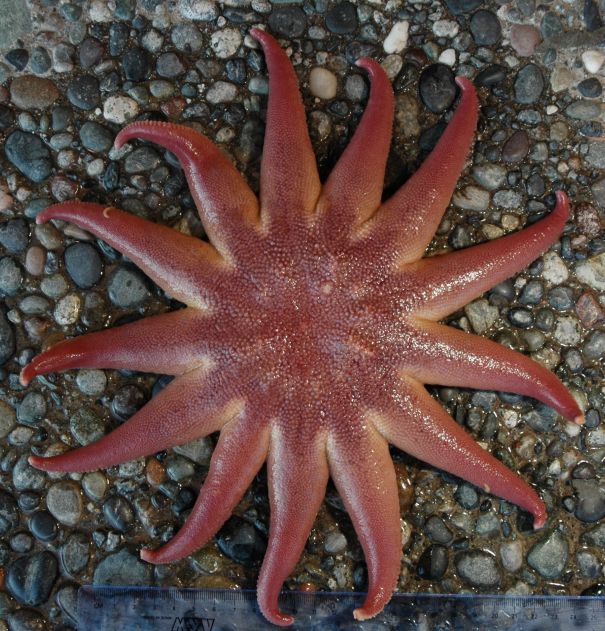
Some S. dawsoni have a color pattern on the aboral
surface, but note there are no blue-gray stripes
running down
the rays.
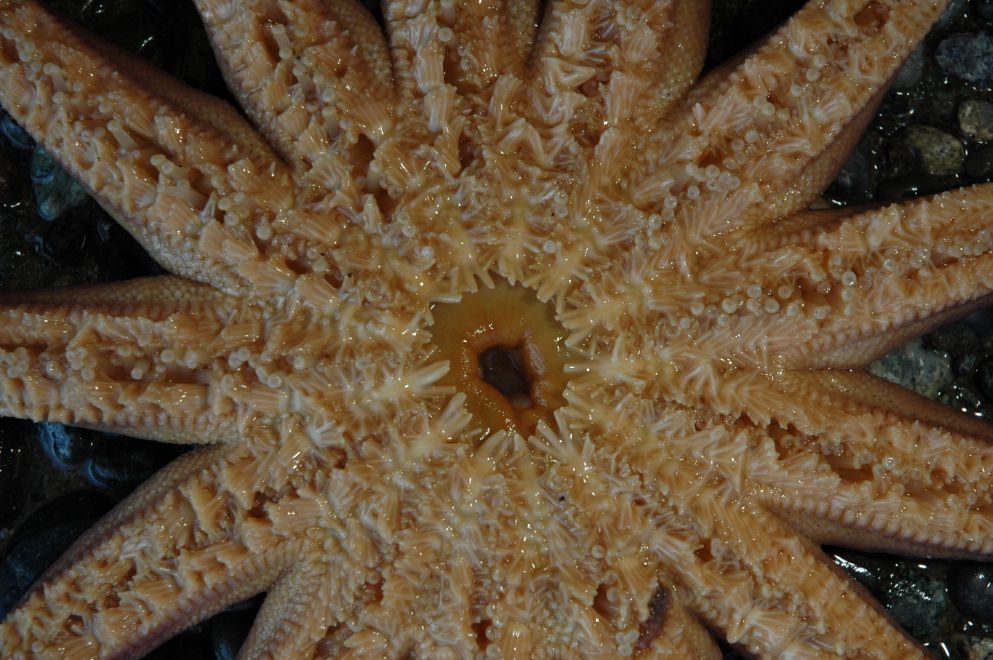
A view of the oral
side of S. dawsoni
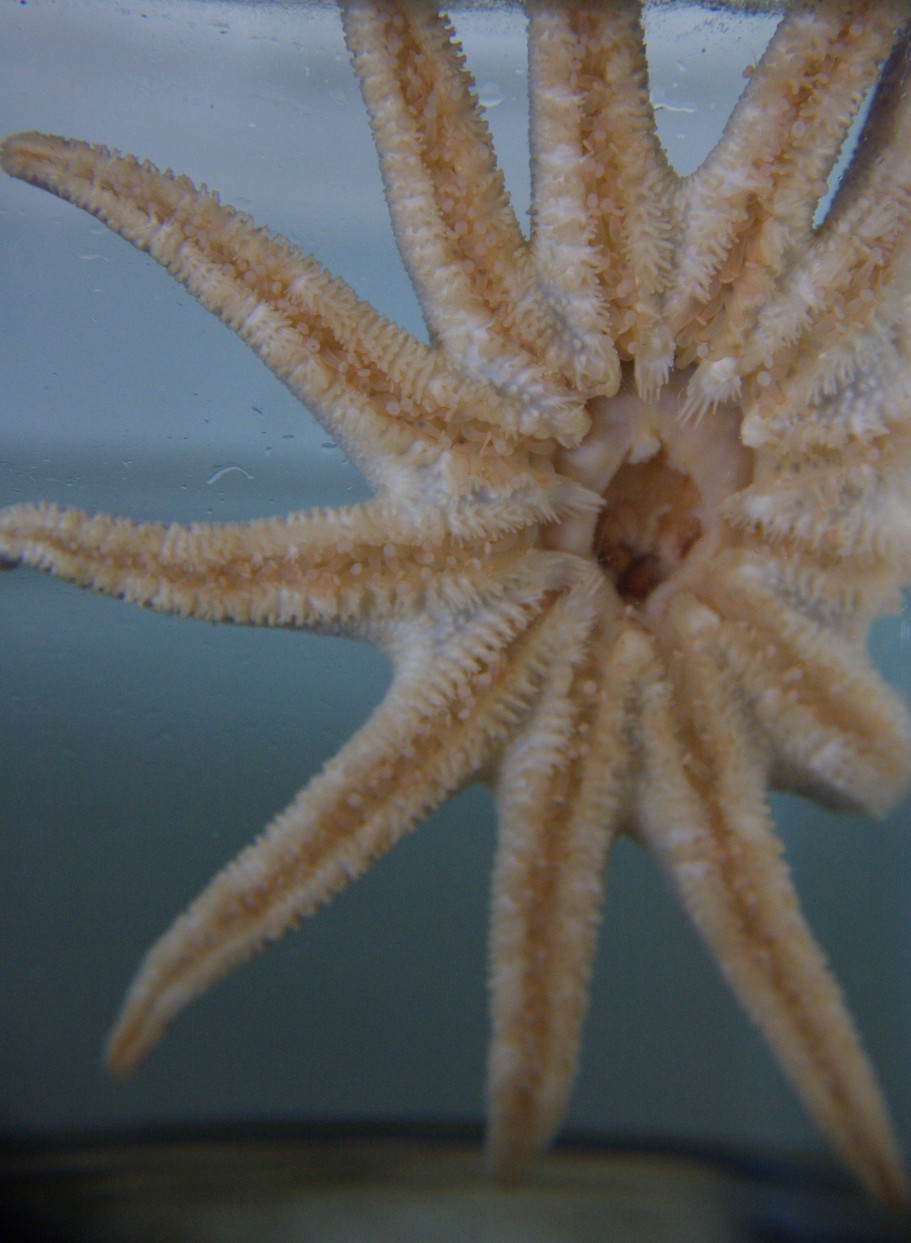
Another view of the open mouth, this time underwater through aquarium glass.

The aboral
ossicles
or paxillae
are well separated. These are magnified.
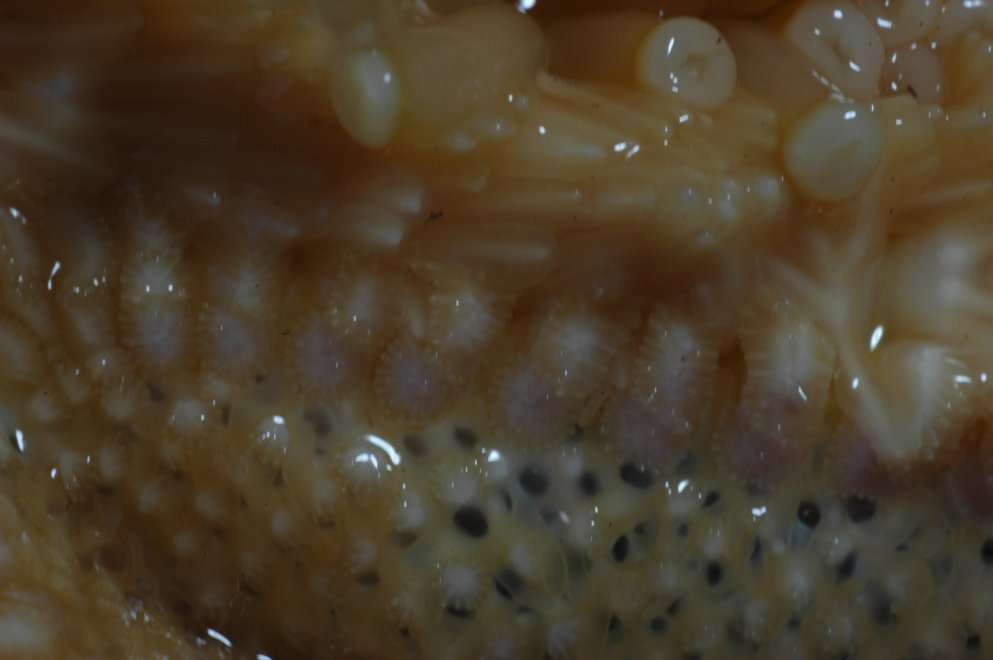
The ossicles
along
the edge of the ambulacral
groove (which is at the top in this photo) are enlarged into marginal
plates.
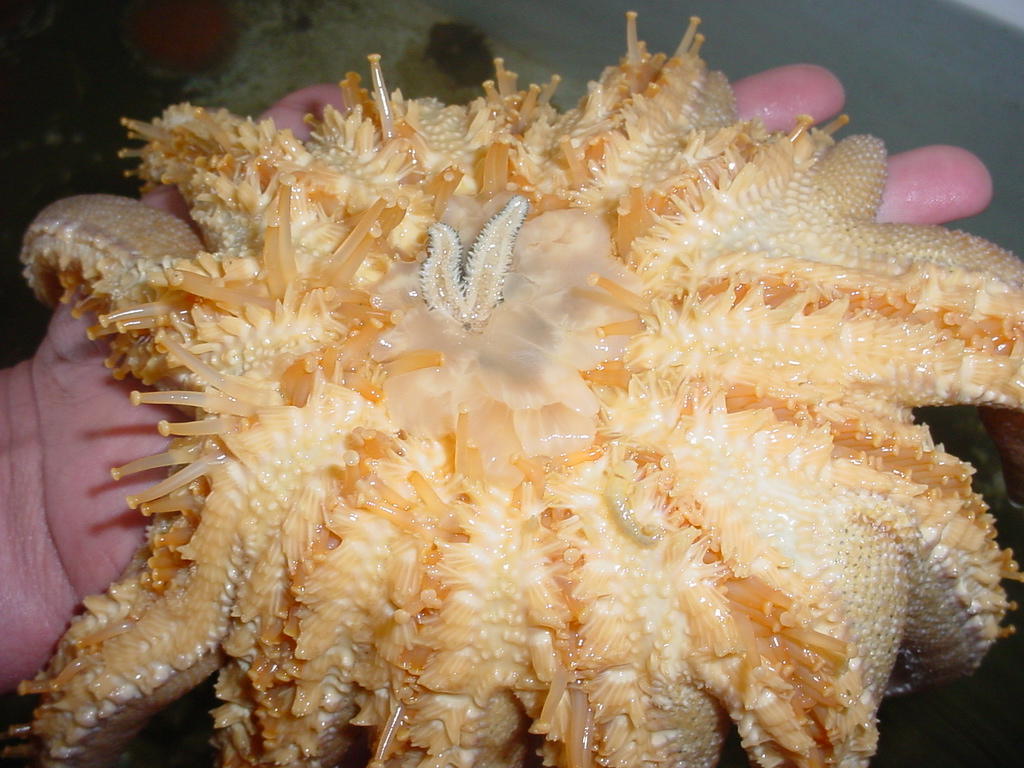
This S. dawsoni is swallowing a Leptasterias
hexactis that it captured. Notice also
the commensal Arctonoe
vittata polychaete scaleworm on the ray.
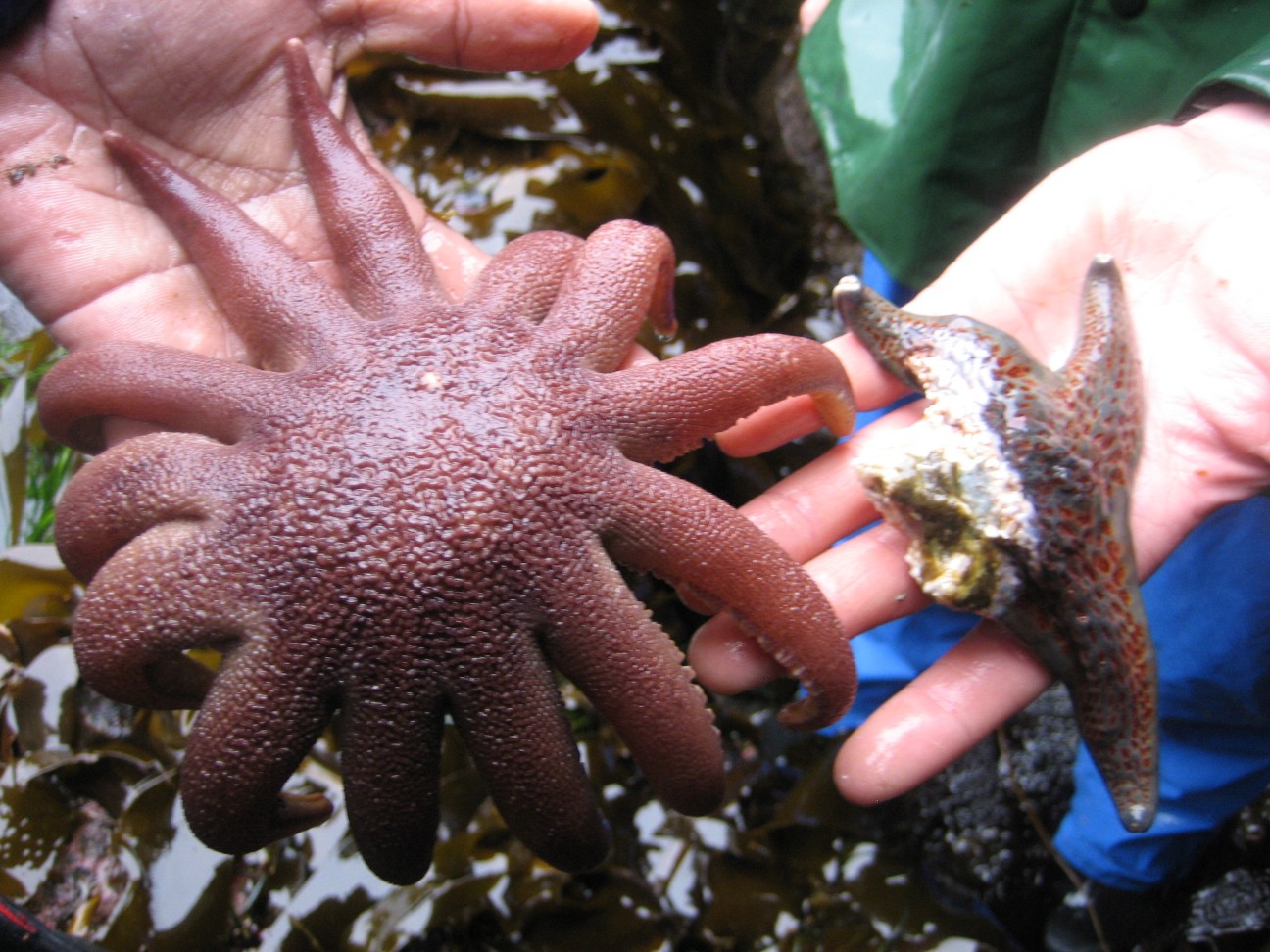
This Solaster dawsoni (left) was found eating this Dermasterias
imbricata on the right at low tide.
Photo by Brooke Reiswig, July 2006
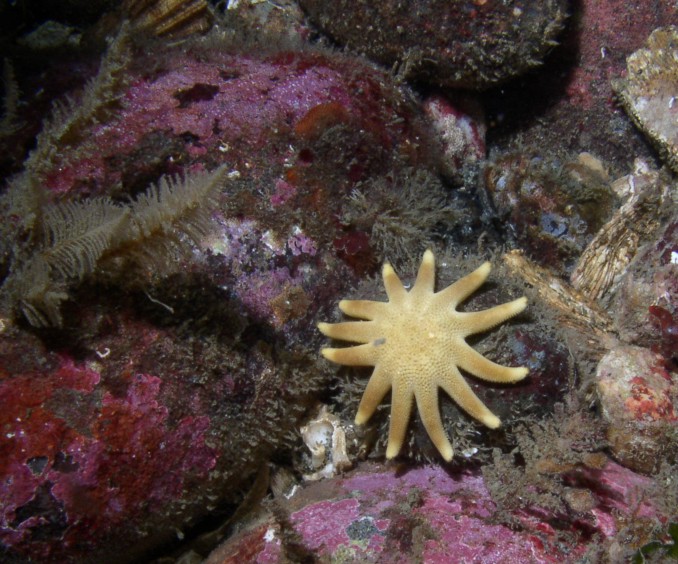
A tiny Solaster dawsoni among hydroids.
Underwater photo
by Kirt Onthank, August 2007
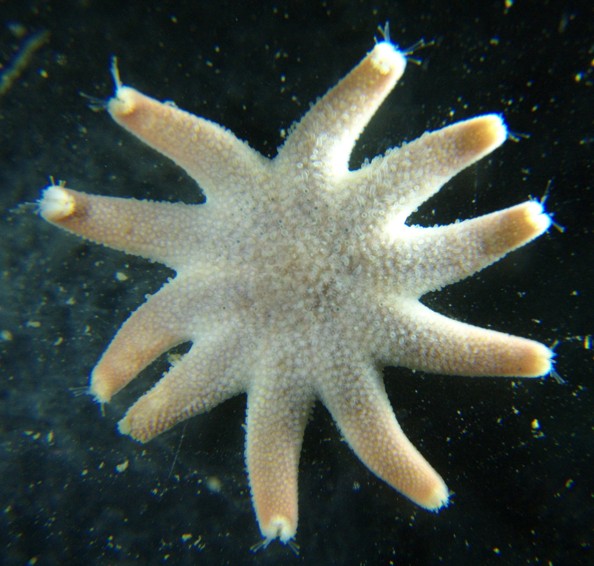
This small individual is about 2.5 cm in total diameter. Photo by Dave Cowles, July 2012
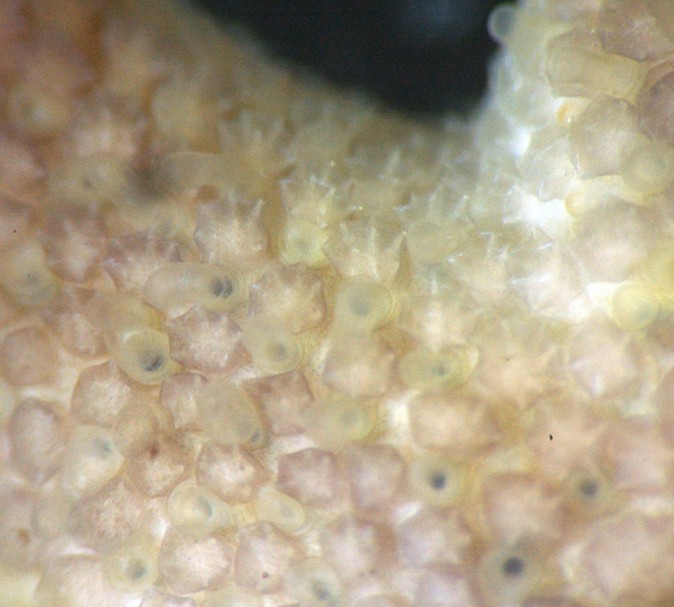
The paxillae of the small individual shown above look different from those of adults. The sack-like prejections are papulae. Photo by Dave Cowles, July 2012
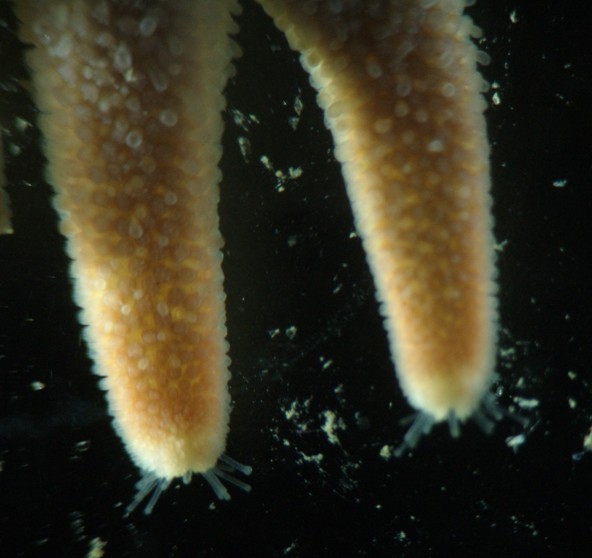
A closeup of the ray tips of the small individual above. Photo by Dave Cowles, July 2012
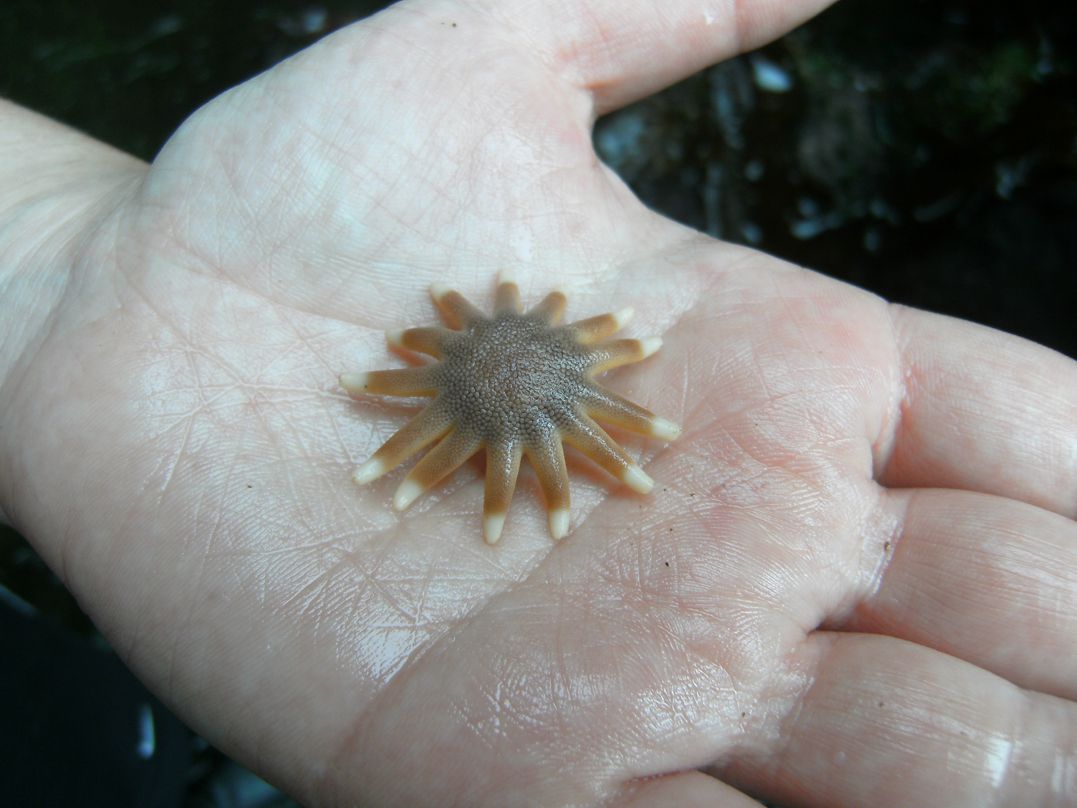
A small Solaster
dawsoni
found at Cape Flattery, 2015. Photo by Dave Cowles
Authors and Editors of Page:
Dave Cowles (2005): Created original page